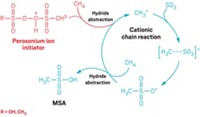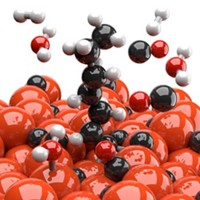Advertisement
Grab your lab coat. Let's get started
Welcome!
Welcome!
Create an account below to get 6 C&EN articles per month, receive newsletters and more - all free.
It seems this is your first time logging in online. Please enter the following information to continue.
As an ACS member you automatically get access to this site. All we need is few more details to create your reading experience.
Not you? Sign in with a different account.
Not you? Sign in with a different account.
ERROR 1
ERROR 1
ERROR 2
ERROR 2
ERROR 2
ERROR 2
ERROR 2
Password and Confirm password must match.
If you have an ACS member number, please enter it here so we can link this account to your membership. (optional)
ERROR 2
ACS values your privacy. By submitting your information, you are gaining access to C&EN and subscribing to our weekly newsletter. We use the information you provide to make your reading experience better, and we will never sell your data to third party members.
C-H Activation
Green method makes methanesulfonic acid from methane
The metal-free, low-temperature process produces the biodegradable strong acid by reacting methane with sulfur trioxide
by Mitch Jacoby
March 21, 2019
| A version of this story appeared in
Volume 97, Issue 12

Researchers at a German chemical company have developed a method to convert methane to methanesulfonic acid (MSA) with a yield and selectivity of nearly 100% (Science 2019, DOI: 10.1126/science.aav0177). The procedure, which involves just two reactants—methane and oleum (a solution of sulfur trioxide in sulfuric acid)—may provide a low-cost route to MSA, a biodegradable strong acid manufactured at the multi-metric-ton level for use in the pharmaceutical and electroplating industries.
Vast reserves of methane, the principal component of natural gas, sit untapped in remote locations. For years, researchers have worked to develop energy- and cost-effective methods for converting the gas to easily transported liquids. Several commercial processes for transforming methane to methanol, hydrocarbons, and other liquids already exist. But most of those methods require costly metal catalysts and start by converting methane to synthesis gas, a mixture of CO and hydrogen, which requires high temperatures (>600 °C) and tends to be economical only at very large scales. BASF, the largest MSA manufacturer, makes the acid by reacting methanol, hydrogen, and sulfur via a multistep process.

Searching for an economical way to directly convert methane to MSA, chemists Christian Díaz-Urrutia and Timo Ott of Grillo-Werke began studying whether methane–sulfur trioxide chemistry could help. They came up with a low-temperature (50 °C) metal-free route. Now, the researchers report they have constructed a pilot plant and produced metric-ton quantities of MSA at 99.9% purity. They have also deduced the reaction mechanism, which is key to further improving the process.
The team explains that a protonated sulfonyl compound, a peroxonium ion, initiates the reaction via hydride abstraction from methane, generating a CH3+ ion (shown). CH3+ reacts with SO3 to produce CH3SO2O+. That cation also reacts with methane via hydride abstraction, yielding MSA and regenerating a reactive CH3+ ion.
This direct single-step reaction could provide cost advantages for making MSA, remarks Ferdi Schüth of the Max Planck Institute for Kohlenforschung, a specialist in methane activation chemistry. He notes, however, that data on the economics of the process are not publicly available and that using oleum requires expensive construction equipment because of the mixture’s acidity. Even so, Schüth says, this way of activating methane may also be useful for producing other chemicals.
Jens Beckmann agrees. The University of Bremen inorganic chemist says the study not only “opens a selective, green, and scalable route to MSA” but also helps chemists understand fundamentals of methane activation and methane-based chemistry.





Join the conversation
Contact the reporter
Submit a Letter to the Editor for publication
Engage with us on Twitter